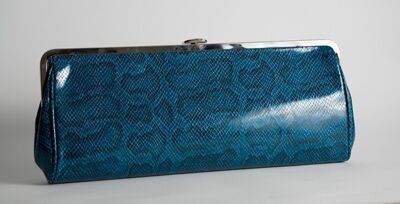Textiles drive new Sappi markets
Twenty years ago, Sappi Fine Paper in Westbrook did absolutely no business in China, according to Sappi Supply Chain Manager Alan Blanchard.
Today, China is the company's biggest client.
The shift to overseas markets is a rising trend for the pulp and paper industry, so much so that it was the focus of the University of Maine Pulp and Paper Foundation's 62nd annual Paper Days, a two-day event that recently took place in Orono.
Paper mills have shifted from local paper-making operations into global companies whose products are used in unusual ways. Mills are generating — and in some cases selling — their own electricity from woody biomass, and some mills, like Sappi, are finding innovative uses for their wood products in foreign markets that extend beyond stationery, tissue and toilet paper.
“It's a little strange that a paper mill in Maine would know anything about fashion,” says Blanchard.
Apparently, it does.
Sappi has retrofitted some of its Westbrook mill equipment to produce “release paper,” a product used to manufacture clothing, sneakers, soccer balls, handbags and automobile interiors.
“We do textures,” says Blanchard. “Our paper is a mold.”
The process works like this: The mill purchases original textured materials, including cowhides and snake skins, and sends them to a vendor, who re-creates those textures on a steel cylinder. The mill then uses that cylinder to produce release paper, which is made from chemical cellulous derived from plant material. That textured paper is forwarded on to foreign manufacturers, which apply it to their fabrics.
“It's a valuable product and it works very well for our customers because they can reuse this paper,” Blanchard says. “They can make 40 meters of coated fabric per meter of [release] paper.”
Blanchard says 85% of the paper produced by its mills leaves the United States destined to about 54 countries; more than half lands in China. “My paycheck comes from China,” he says.
The company can deliver “promo tubes” of its textures via UPS to prospective customers within four days of ordering, which Blanchard says is key, especially in the world of fashion. Full orders are sent through cargo ships, often times through ports in New York and Montreal, and arrive within 28 days to China and 13 days to Europe. “Time is everything,” he says. “This is a styling business.”
Sappi sends employees all over the world to research emerging fashion trends, he says, noting European fashion professionals also come to Westbrook.
Innovation is also key. Blanchard says the company employs five people to brainstorm “out-of-the-box” uses for Sappi's paper products. He says the group has devised a new product that is being marketed in the United States: a vinyl car wrap that allows owners to protect and change the color of their high-end automobiles.
“When you get sick of that [color] you can tear it off and put another one on,” he says. “That's a growing market.”
‘Wolves at your back’
Innovation and branding are two areas that foreign competitors, especially China, are hoping to bolster in an effort to overtake the United States, according to Robin McCann, business director of paper and carpet for the Ohio-based Omnova Solutions, a global chemical company whose product is used in coated papers.
“[Research and development] and innovation is the edge we have,” McCann says.
China is a fast-growing market, says McCann, noting China's middle class is expected to grow to 520 million people by 2025, “much exceeding the United States and the North American populations.”
McCann says U.S. companies must continue to invest in technology, R&D, engineering and process expertise, and produce superior marketing and product quality to compete with, and inside of, China. “Whether we like to admit it or not, branding is what we do very well in the United States,” she says.
Blanchard says Sappi is constantly trying to stay ahead of the competition — the “wolves that are at your back.” The company places a strong emphasis on service rather than just concentrating on products, and is careful to learn and respect its customers'cultures.
Communication is especially important, says Blanchard, particularly when talking to Chinese clients and service providers. He says even Sappi employees who speak Mandarin need to do so with sensitivity, since the meaning of words can change with a simple, and unintentional, inflection.
Blanchard says Sappi is also filling that communication gap with technology. The company has information systems that track in real time what's happening on the floors of its mills, including Westbrook. That way, when mill managers like Blanchard are sleeping in the United States, work can continue in foreign lands.
“They know more about what's going on in our mills than I do, because they're awake,” he says.
However, Sappi employees must also be adaptive and creative when trying to help foreign manufacturers, especially those that lack technology. Blanchard showed the Paper Days audience a slide of engineers posing with clients in India, who use large, antique scales to measure the resins for their coating lines.
“You have to go and work with them with what they have,” he says.
Although he predicts release paper will continue to be a major part of Sappi's business, Blanchard says the company is always looking for different ways to apply textures to building materials, glass and the like.
“The most dangerous thing you can do is sit on your laurels,” he says. “If your competition is gunning for you and you're complacent, you might not be No. 1 in the future.”
















Comments